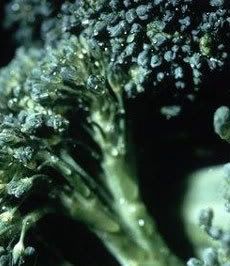
Ever wonder how anything gets accomplished within the apparent chaos of ant colonies and bee hives or how schools of fish and flocks of birds suddenly shift direction with such precision? These animals rely on collective thought, which scientists have dubbed swarm intelligence. This type of group thinking not only brings order to millions of creatures living closely together, it may have broader applications in our own world to increase efficiency, safety, and the way we live.
Ant colonies can range in size from hundreds to even millions of occupants, yet despite such density, they maintain highly organized communities and every ant knows his duty. This phenomenal management that enables the ants to allocate tasks, defend territory and find the optimal path for food is due, ironically, to a complete lack of centralized leadership and the ants' ability to communicate information and trust individual input. There is no single leader of an ant colony - the queen is just there to lay eggs - instead, the entire colony relies on the interactions between individual ants, each of which is following simple rules of thumb, a system scientists call self-organizing.
Ants communicate mostly through touch and smell, so when they bump into each other they sniff antennae to confirm the other's identity, role in the colony, and other important information. For example, the return of patroller ants that are sent out of the colony each morning serves as a signal to the forager ants that it's time to go out. But the foragers also glean information about outside conditions, potential predators, and food availability based on how many and how frequently they run into patroller ants and other returning forager ants. According to Deborah Gordon, a biologist at Stanford University studying red harvester ants in the Arizona desert, "A forager won't come back until it finds something. The less food there is, the longer it takes the forager to find it and get back. The more food there is, the faster it comes back. So nobody's deciding whether it's a good day to forage. The collective is, but no particular ant is."
Honey bees also use individual input to make hive-wide decisions, such as where to construct a new hive when the current one grows too large. The bees scatter to search for the best real estate. When they return to the queen, they do a little dance called a waggle to show their enthusiasm for the new hive site they found. Other bees investigate based on the dance and congregate and dance near the best new home. The location with the most dancing bees becomes their new abode. The bees' ability to investigate and consider multiple options and then decide on a course of action based on popular vote leads them to the best choice.
Thomas Seeley, a biologist at Cornell University, has studied bees for more than 10 years and believes that their decision making could be applied to corporate meetings where decisions could be made by bringing all possibilities to the table, discussing the ideas and then voting by secret ballot.
The collective decision making process of swarms has also inspired some in the corporate world to integrate these methods to improve the way they do business. One such company, called American Air Liquide, which produces medical and industrial gases such as hydrogen, oxygen and nitrogen, developed a computer program that mimics an ant found in Argentina that uses a pheromone trail to communicate to other ants in the colony the quickest path to the best food source. The scent of the trial is reinforced each time an ant travels that path, further reinforcing the behavior. American Air Liquide uses virtual "ants" to mark the shortest and most reliable routes for their delivery trucks. Their artificial colony approach also uses genetic algorithms based on factory schedules, weather, estimated customer demand and costs to find the most efficient business model each day. Dairy, heating oil, grocery and telephone companies across Europe are also finding this artificial pheromone trail system useful in their industries.
Ant colonies can range in size from hundreds to even millions of occupants, yet despite such density, they maintain highly organized communities and every ant knows his duty. This phenomenal management that enables the ants to allocate tasks, defend territory and find the optimal path for food is due, ironically, to a complete lack of centralized leadership and the ants' ability to communicate information and trust individual input. There is no single leader of an ant colony - the queen is just there to lay eggs - instead, the entire colony relies on the interactions between individual ants, each of which is following simple rules of thumb, a system scientists call self-organizing.
Ants communicate mostly through touch and smell, so when they bump into each other they sniff antennae to confirm the other's identity, role in the colony, and other important information. For example, the return of patroller ants that are sent out of the colony each morning serves as a signal to the forager ants that it's time to go out. But the foragers also glean information about outside conditions, potential predators, and food availability based on how many and how frequently they run into patroller ants and other returning forager ants. According to Deborah Gordon, a biologist at Stanford University studying red harvester ants in the Arizona desert, "A forager won't come back until it finds something. The less food there is, the longer it takes the forager to find it and get back. The more food there is, the faster it comes back. So nobody's deciding whether it's a good day to forage. The collective is, but no particular ant is."
Honey bees also use individual input to make hive-wide decisions, such as where to construct a new hive when the current one grows too large. The bees scatter to search for the best real estate. When they return to the queen, they do a little dance called a waggle to show their enthusiasm for the new hive site they found. Other bees investigate based on the dance and congregate and dance near the best new home. The location with the most dancing bees becomes their new abode. The bees' ability to investigate and consider multiple options and then decide on a course of action based on popular vote leads them to the best choice.
Thomas Seeley, a biologist at Cornell University, has studied bees for more than 10 years and believes that their decision making could be applied to corporate meetings where decisions could be made by bringing all possibilities to the table, discussing the ideas and then voting by secret ballot.
The collective decision making process of swarms has also inspired some in the corporate world to integrate these methods to improve the way they do business. One such company, called American Air Liquide, which produces medical and industrial gases such as hydrogen, oxygen and nitrogen, developed a computer program that mimics an ant found in Argentina that uses a pheromone trail to communicate to other ants in the colony the quickest path to the best food source. The scent of the trial is reinforced each time an ant travels that path, further reinforcing the behavior. American Air Liquide uses virtual "ants" to mark the shortest and most reliable routes for their delivery trucks. Their artificial colony approach also uses genetic algorithms based on factory schedules, weather, estimated customer demand and costs to find the most efficient business model each day. Dairy, heating oil, grocery and telephone companies across Europe are also finding this artificial pheromone trail system useful in their industries.


